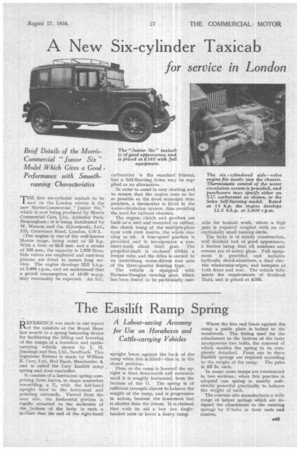The Easilift Ramp Spring
Page 57

If you've noticed an error in this article please click here to report it so we can fix it.
A Labour-saving Accessory for Use on Horseboxes and Cattle-carrying Vehicles
REFERENCE was made in our report of the exhibits at the Royal Show last month to a spring balancing device for facilitating the lifting and lowering of the ramps of a horsebox and cattle'carrying vehicle shown by J. H. Jennings and Son, Ltd., Sandhach. This ingenious fitfrient is made by William E. Cary, Ltd., Red Bank, Manchester, 4, and is called the Cary Easilift ramp spring and door controller.
It consists of a laminated spring comprising three leaves, in shape somewhat resembling a U, with the left-hand upright bent to the horizontal and pointing outwards. Viewed from the near side, the horizontal portion is rigidly attached to the underside of the bottom of the body in such a mariner that the end of the right-hand upright bears against the back of the ramp when this is lifted—that is, in the closed position.
Thus, as the ramp is lowered the upright is bent downwards and outwards until it is roughly horizontal, from the bottom of the U. The spring is of sufficient strength almost to balance the weight of the ramp, and is progressive in action, because the innermost leaf is shorter than the others. It is claimed that with its aid a boy can singlehanded raise or lower a heavy ramp.
Where the free end bears against the ramp a guide plate is bolted to the woodwork. The fitting used for the attachment to the bottom of the body incorporates two bolts, the removal of which enables the spring to be completely detached. From one to three Easilift springs are required according to the weight of the ramp. The price is £.2 2s. each.
In many cases ramps are constructed in two sections ; when this practice is adopted one spring is usually sufficiently powerful practically to balance the weight of each.
The concern also manufactures a wide range of helper springs which are designed for attachment to the existing springs by U-bolts at their ends and centres.




























































































